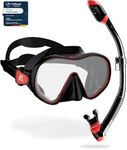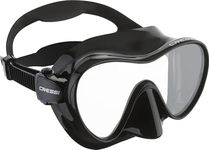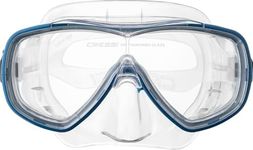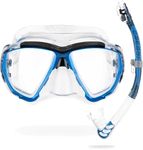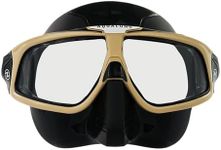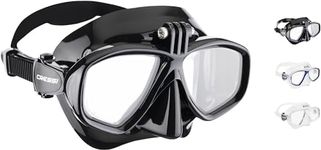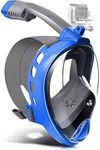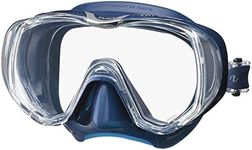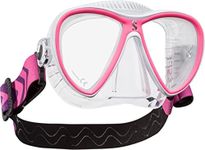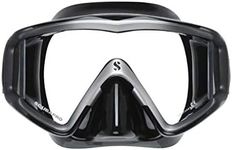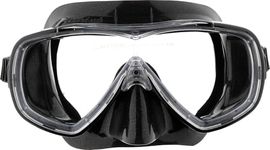Buying Guide for the Best Scuba Masks
Choosing the right scuba mask is crucial for a comfortable and enjoyable diving experience. A good mask will provide a clear view underwater, fit comfortably on your face, and prevent water from leaking in. When selecting a scuba mask, consider the fit, lens type, skirt material, and other features that can enhance your diving experience. It's important to try on different masks to find the one that fits your face shape and meets your diving needs.FitThe fit of a scuba mask is perhaps the most important factor to consider. A well-fitting mask will create a good seal on your face, preventing water from leaking in. To test the fit, place the mask on your face without using the strap, inhale slightly through your nose, and see if it stays in place. If it does, it likely fits well. Masks come in various shapes and sizes, so try different ones to find the best fit for your face shape.
Lens TypeScuba masks come with different lens types, including single, dual, and multiple lenses. Single lens masks offer a wide, unobstructed view, while dual lens masks can be easier to fit with prescription lenses. Multiple lens masks may provide peripheral vision enhancements. Consider what type of diving you'll be doing and whether you need prescription lenses when choosing the lens type. If you value a wide field of view, a single lens might be best, but if you need corrective lenses, a dual lens could be more suitable.
Skirt MaterialThe skirt of a scuba mask is the part that seals against your face, and it's typically made from silicone or rubber. Silicone skirts are more popular because they are softer, more comfortable, and provide a better seal. They also tend to last longer than rubber skirts. If comfort and durability are important to you, opt for a mask with a silicone skirt. However, if you're looking for a more budget-friendly option, a rubber skirt might suffice.
VolumeThe volume of a scuba mask refers to the amount of air space inside the mask. Low-volume masks are easier to clear and equalize, making them a good choice for freedivers and those who prefer a streamlined profile. High-volume masks may offer a wider field of view but can be more challenging to clear. Consider your diving style and comfort with clearing a mask when deciding on the volume. If you prefer ease of use and frequent mask clearing, a low-volume mask might be ideal.
Strap and Buckle SystemThe strap and buckle system of a scuba mask affects how easily you can adjust the fit and how securely the mask stays in place. Look for a mask with a strap that is easy to adjust, even with gloves on, and a buckle system that allows for quick and precise adjustments. Some masks feature swivel buckles for added comfort and flexibility. If you often dive in cold water or wear gloves, ensure the strap and buckle system is user-friendly in those conditions.
Field of ViewThe field of view is how much you can see through the mask. A wider field of view allows you to see more of your surroundings, which can enhance your diving experience. Masks with larger lenses or side windows can provide a better field of view. If you enjoy taking in the underwater scenery or need to be aware of your surroundings, prioritize a mask with a wide field of view. However, if you prefer a more compact mask, you might sacrifice some peripheral vision.
